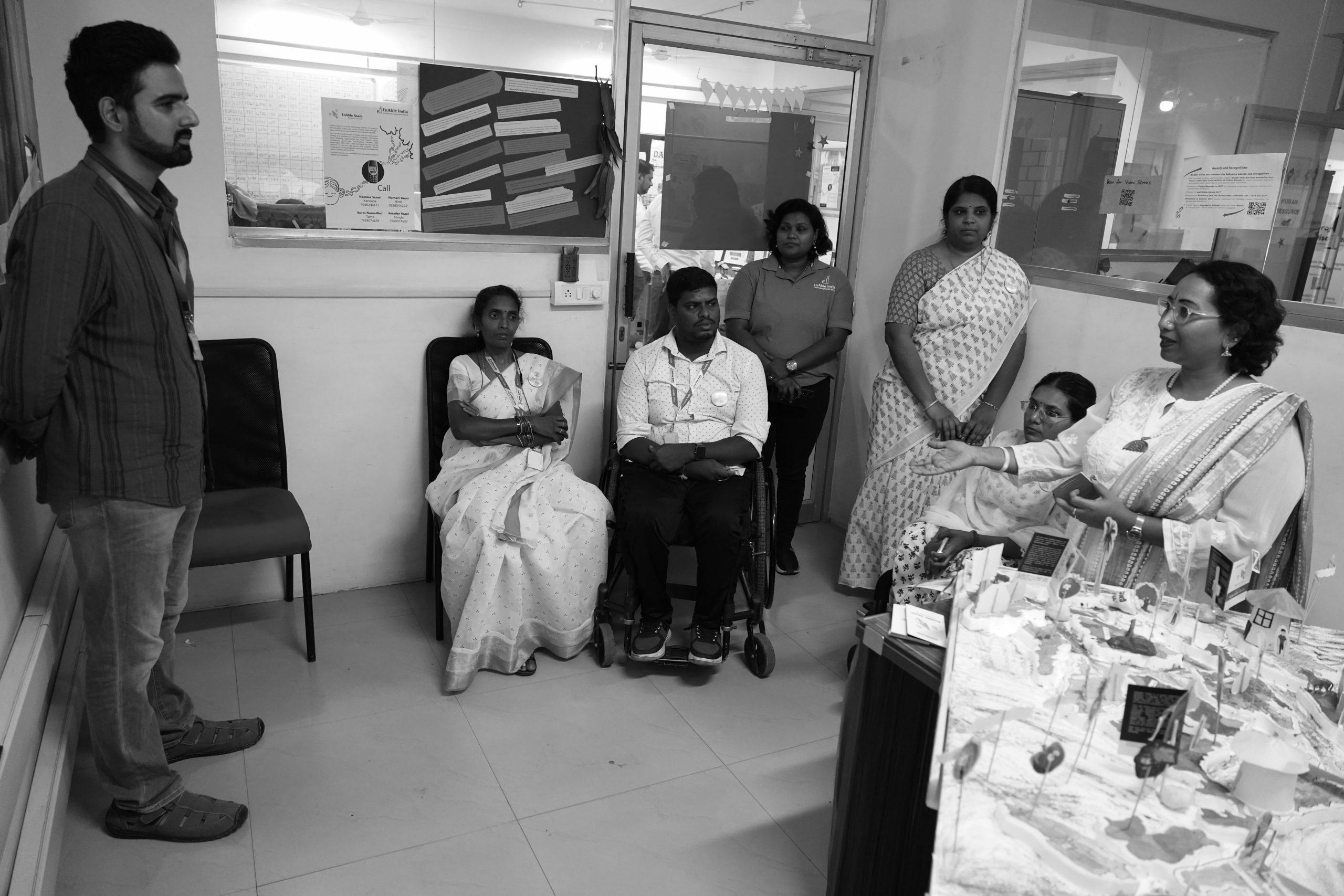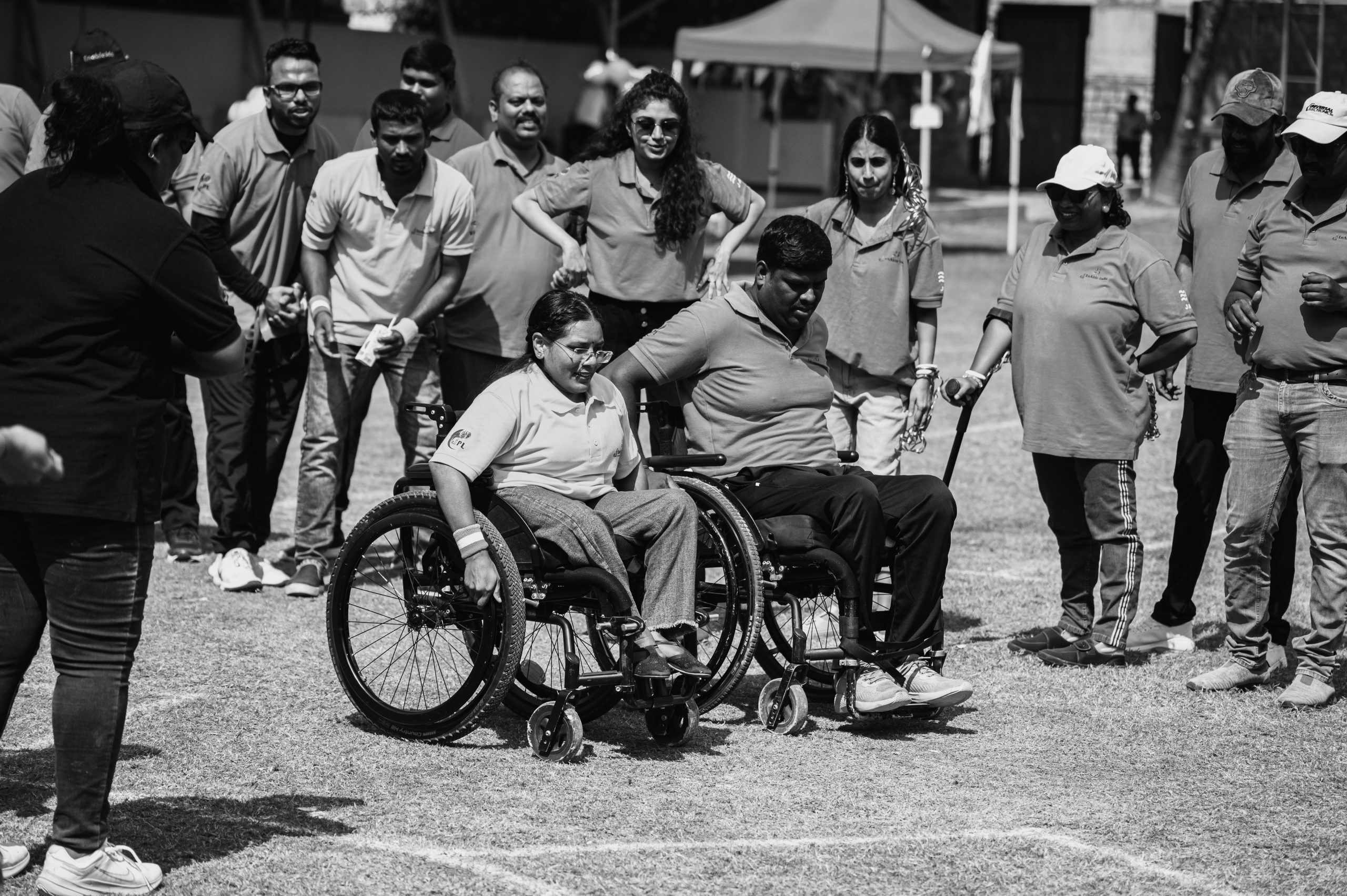La entidad en datos
Main activity: Livelihoods with dignity for persons with disability Year
Founded: 1999
Legal structure: Charitable Trust
Number of people currently employed: 138
Region/Country in which it operates: India Category: Livelihoofd for persons with disabilities

CLAVES DEL ÉXITO E IMPACTO EN LA SOCIEDAD
EnAble India (EI), a charitable trust, was founded in 1999 by Shanti Raghavan and Dipesh Sutariya, turning a deeply personal experience into a movement. Shanti’s brother, Hari, was diagnosed with Retinitis Pigmentosa, a degenerative eye condition, which led to his blindness in early adulthood. After exhausting all medical & spiritual options, Shanti & Dipesh took charge. They brought Hari to the United States to gain the technological & mobility skills necessary to navigate life and pursue an education. Returning to India Hari completed his MBA graduating at the top of his class. Despite attending over 70 job interviews, he faced rejection, with no offers coming through. However, persistence paid off & Hari is now in senior management at a large multinational company. This journey articulated in EI’s 25 years. These years have been significant, not only for the organisation but also for the disability sector & the nation. EI’s journey can be divided into three decades each representing a distinct phase of growth. The first decade was entrepreneurial characterised
by experimentation, proving the business case, developing models, frameworks & services. The second decade marked the formalisation of EI as an institution. During this time, systems such as funding, accounting & human resource practices were established, the team expanded and leadership evolved. It was then that EI’s identity solidified beyond being “Shanti’s or Dipesh’s organisation” to becoming a high-trust, high-performance entity managed by professionals. Today we have 138 staff members half of whom are persons with disabilities.
EnAble India was founded as a Charitable Trust due to the difficulty in measuring return on investment for this type of work. Disability often remains on the periphery of economic discussions and the only viable way to create impact was through grant funding. The introduction of CSR provisions under Section 135
of the Companies Act, 2013, has also fueled steady growth its funding portfolio.
Over the last 25 years we have impacted 500.000 persons with disabilities across their diverse needs including jobs, trainings, government schemes, self-employment and more.
– Our GarvSe Centres have 4 persons with disability undergo Entrepreneurship Training in Rural India every day with a settlement of 3 gai ing economic agency
– EnAble Vaani, our social network platform based on IVR sees 4 calls every minute, where the content generated on the platform is 95% by the users across disabilities building social agency
– 81% of persons with disability , when employed support their families with 35% becoming primary bread winners building economic agency.

DESAFÍOS ENFRENTADOS
1. Establishing value: It has been a struggle to establish value of persons with disability towards their inclusion in the workplace, in transport, in healthcare, in financial services etc.
2. Restricted Funding: The way Corporate Social Responsibility funding is structured in India makes it very narrow in scope. It thus makes it difficult to fund organization development or undertake future forward projects where outcomes are not purely quantitative.
3. Building Collectives: All resources including funds, knowhow, beneficiaries are held very close to the chest making collaboration a difficult task, this has eased marginally now.
4. Diversity of needs: Working with people with disabilities means working across different disabilities, working across needs that differ depending where the person lied on the disability spectrum, gender, geography and more.
ESCALABILIDAD Y REPLICABILIDAD
The very core of what we are building is based on scale and replicability.
1. Human Capital: Building human capital for the sector means that we are building a pool of trained disability professionals that will replicate the knowledge, skills and attitudes built over the last 25 years at EnAble India. These trained individuals will spread to the far reaches of our country working for other organisations and even starting their own to focus on livelihoods for persons with disabilities. Additionally we work with innovators in the space to mentor, fund, grow and establish.
2. Social Capital: The easy thing to do would be to open up a multitude of EnAble Indias across the country but then the dependence would remain with one organisation. Instead what we have done is work with over 1000 grassroots organisations to build their capabilities, we have established 60 centres where we come in as knowledge partners across the country. The capacity of the sector is getting built in this way. We have replicable curricula, systems and processes that are used by these centres to strengthen and grow.
3. Digital Capital: Creating digital capital in the form of DPID (Digital Public Infrastructure for Disability) and OPuN (Open Purple Networks) is pivotal for the scale and sustennace of the sector. OPuN addresses systemic gaps in the disability sector by leveraging digital technology to connect PWDs with a wide range of service providers. It enables seamless access to services and supports journeys such as education, employment, early intervention, healthcare, and more. By creating a public digital infrastructure, OPuN promotes collaboration among service providers, encourages innovation and growth, and ultimately empowers PWDs to achieve greater independence and quality of life. This initiative aligns with the theme of building inclusive digital ecosystems that address the needs of marginalized communities.
CONCLUSIONES Y MORALEJA
There are many lessons to be learnt.
1. Leverage the positives: EnAble India was able to leverage the CSR Provisions published in 2013 as well as the Rights of Persons with Disabilities Act 2016.
2. Think outside the box: One of the problems of growing organisations working across multiple functions is that everyone does not get equal exposure or recognition. EnAble India came up with a Honey Comb Structure instead of the traditional hierarchical org structure.
3. Be agile: EnAble India has time and again changed its way of working, what can’t bend breaks! This was apparent even during COVID.
4. Harness the power of collectives: Uniting NGOs often working in silos leads to greater good. Alone we can do so little, together we can do so much.